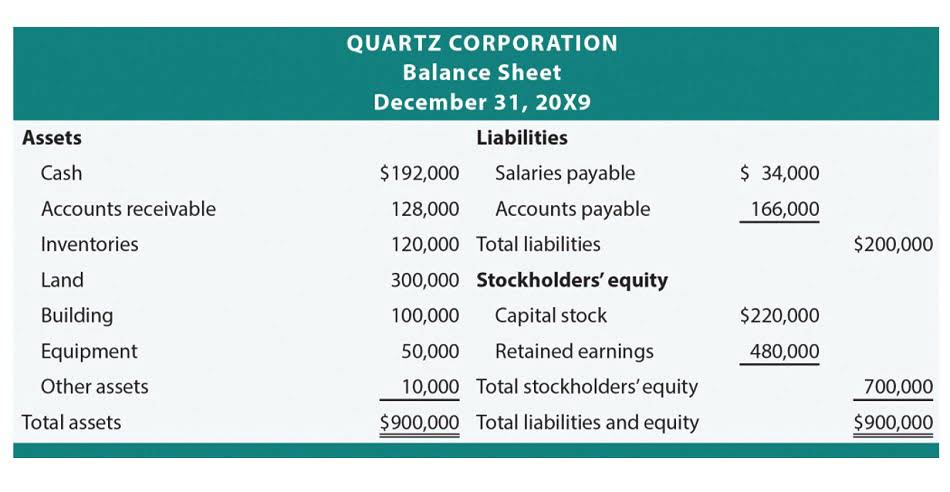
Understanding gross pay ensures that you can properly make any deductions to employee paychecks. This includes mandatory deductions like taxes as well as voluntary deductions for other benefits like company savings plans. Gross pay is the total amount of wages an employee earns before any deductions are made. Payroll deductions, taxes, and health benefits QuickBooks are deducted from an employee’s gross wages. Apple also incurred $7.3 billion of research and development costs, $6.2 billion of selling, general, and administrative costs, and $4.04 billion for income taxes.

GDP and Investing

If you’re an employee, gross pay is the starting point for determining what you owe in federal and state taxes at the end of each year. Gross pay is also the number that most lenders consider when evaluating your finances for a mortgage or other financial product. If your company offers health, dental, vision, life, or other insurance plans for employees, employees may pay their portion of plan premiums from their gross pay. Employees can also choose to contribute to a health savings account from their gross pay, up to a maximum of $3,650 for employee-only coverage or law firm chart of accounts $7,300 for family coverage.
Business Gross Income Example
- Theoretically, this is why savvy investors seek to hold a significant portion of their income in investments with a 2% or higher return.
- Gross earnings is the total amount of income earned over a period of time by an individual/household or a company.
- Usually expressed as a percentage rate, this measure is popular for economic policymakers because GDP growth is thought to be closely connected to key policy targets such as inflation and unemployment rates.
- However, according to federal law, lower-paid salaried employees are entitled to overtime pay.
- A number of adjustments can be made to a country’s GDP to improve the usefulness of this figure.
- Because GDP provides a direct indication of the health and growth of the economy, businesses can use GDP as a guide to their business strategy.
Real per-capita GDP, adjusted for purchasing power parity, is a heavily refined statistic to measure true income, which is an important element of well-being. An individual in Ireland might make $100,000 a year, while an individual in China might make $50,000 a year. Consumption refers to private consumption expenditures or consumer spending. Consumers spend money to gross pay definition economics acquire goods and services, such as groceries and haircuts.
- The lender will determine how much to lend based on the individual’s debt-to-income ratio, or DTI.
- Most states deduct a state and local income tax in addition to federal income tax.
- Gross pay is the amount of total compensation an employee earns for working for your business, but it’s not the amount that lands in their bank account each pay period.
- Real GDP is the indicator that says the most about the health of the economy.
- Your gross income can be found on a pay stub as the total amount of money you earned in a given period before any deductions or taxes are removed.
- For a business, gross income is the difference between revenues and cost of goods sold whereas net income is the difference between gross income and all other business costs, such as taxes.
Gross Domestic Product (GDP) Formula and How to Use It
Individuals often closely track their real income compared to nominal income to have the best understanding of their purchasing power. Although GDP is a widely used metric, there are other ways of measuring the economic growth of a country. Once a business calculates its gross earnings, it may subtract the rest of its business expenses, including costs such as utilities, loan repayments, office supplies, contractor fees, and many other expenses. A company’s gross earnings are reported periodically on its income statement. The first line of the income statement reports a company’s total sales and revenues for a given time period, while the COGS and gross earnings often appear on the second and third lines of many income statements. In the corporate world, it’s an accounting convention that refers to a public company’s gross profit or the amount left from total revenues over a specified time period once the cost of goods sold (COGS) is deducted.

Create a free account to unlock this Template
- For example, if prices rose by 5% since the base year, then the deflator would be 1.05.
- When employers discuss salaries and wages, they usually discuss them in terms of gross pay.
- Other deductions, such as contributions to a Roth IRA and certain voluntary benefits, do not lower taxable income and are referred to as post-tax deductions.
- Other takes on the real wage rate might look at the percentage of real to nominal wages or the real vs. nominal wage growth rate.
- In many service industry positions, customers will give an employee a tip as a form of direct compensation.
- For example, a country could have a high GDP and a low per-capita GDP, suggesting that significant wealth exists but is concentrated in the hands of very few people.
Having an expectation for a real wage rate can be just as important as a career expectation for a nominal wage rate. Generally, the three main price indexes will report relatively the same level of inflation. However, analysts of real income can choose any price index measure that they believe best fits their income analysis situation. Because GDP provides a direct indication of the health and growth of the economy, businesses can use GDP as a guide to their business strategy. Government entities, such as the Fed in the U.S., use the growth rate and other GDP stats as part of their decision process in determining what type of monetary policies to implement. But if a year’s worth of food, clothing, and other items costs three times as much in Ireland as in China, then the worker in China has a higher real income.

Specifically, if the salary of the employee is not more than $455 per week or $23,660 per year, he or she must receive overtime pay whenever applicable. To compute the gross pay of employees with an annual rate, divide the total amount of yearly pay by the number of pay periods within a year. For example, if the employee’s annual pay is $12,000 and there are 24 pay periods in a year, their gross pay per period is $500. Gross pay refers to the amount used to calculate the wages of an employee (hourly) or salary (for the salaried employee). It is the total amount of remuneration before removing taxes and other deductions such as Medicare, social security, insurance, and contributions to pension and charity. Gross pay is the amount of total compensation an employee earns for working for your business, but it’s not the amount that lands in their bank account each pay period.

